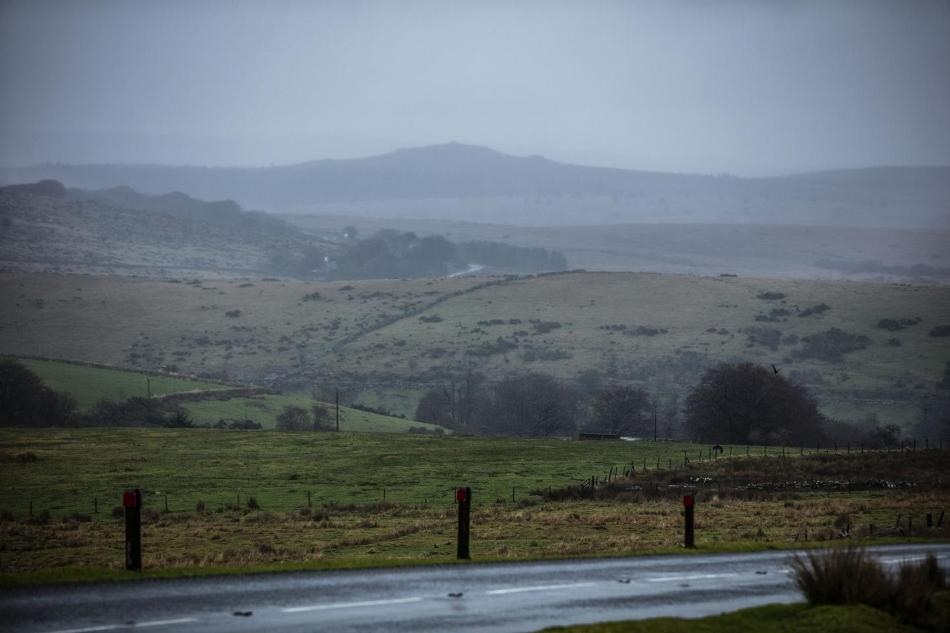Nov 15 2019
In recent weeks, communities and homes across the United Kingdom have felt the entire impact of torrential downpours. According to a new study performed by the University of Plymouth, in the days to come, the UK’s uplands may witness an annual rainfall that is considerably more than is presently being forecasted in national climate models.
 Heavy rainfalls across Dartmoor on Saturday, November 9th, 2019. Image Credit: Lloyd Russell, University of Plymouth.
Heavy rainfalls across Dartmoor on Saturday, November 9th, 2019. Image Credit: Lloyd Russell, University of Plymouth.
Researchers examined the rainfall records from the 1870s to the current day and evaluated them against those included in the UK Climate Projections 2018 (UKCP18) report of Met Office. Their results revealed that there has been a substantial increase in winter, autumn, and spring precipitation, which was highest in the region’s upland windward areas. Additionally, there has been a considerable increase in winter precipitation, which is widely consistent with UKCP18 projections.
However, the researchers’ findings indicate that for autumn, summer, and spring, there might be a huge divergence in precipitation by the mid to late 21st century, with the observed mismatch being greatest in upland regions.
Reported in the Climate Research journal, the study was carried out by Thomas Murphy, a research student, and academics from the University’s School of Geography, Earth and Environmental Sciences and School of Biological and Marine Sciences.
Our study helps contextualise the latest UK climate change projections, and suggest caution is required when making assumptions on climate impacts based on climate models. Current models predict that by 2050, summer rainfall on Dartmoor will fall by as much as 20%, but our results from past records show that in the uplands it is on an upward trajectory.
Dr Paul Lunt, Study Co-Author and Associate Professor, School of Geography, Earth and Environmental Sciences, University of Plymouth
Lunt continued, “This study shows there have been significant increases in spring, autumn, winter and annual precipitation for upland regions in South West England between 1879 and 2012. Meanwhile, the moderate increases in summer precipitation represent a deviation from the drier summers predicted within current and previous climate models.”
In that regard, this research highlights the complex challenges facing those trying to predict the effects of climate change. Upland areas are among the most important UK regions in terms of biodiversity and carbon sequestration, but they are also the most vulnerable to increased precipitation.
Dr Paul Lunt, Study Co-Author and Associate Professor, School of Geography, Earth and Environmental Sciences, University of Plymouth
About one-third of the UK’s land area is covered by upland areas that are more than 300 m above the sea level. Due to their cultural heritage and biodiversity, these areas are regarded to be of national and international importance. The upland areas are also the source of 68% of the UK’s freshwater and play a major role in mitigating flood risk.
Precipitation levels in the upland sites are normally double the average of those for lowland areas in the United Kingdom. Therefore, their contribution to downstream flood damage and flood risk is disproportionate to their catchment area.
The study focused on Plymouth and Dartmoor, in an attempt to investigate one of the longest-running records of lowland and upland precipitation found anywhere in Western Europe. The study also scrutinized the shorter-term records from several upland areas.
The outcomes demonstrated that rainfall in upland sites has increased in all seasons in the past 130 years, with winter, autumn, and spring increasing by over 12%. Rainfall in Plymouth has increased by over 5% in all seasons in addition to summer, where there has been a subtle decrease. In Plymouth and the upland regions, annual levels have increased by 5% (46 mm) and 11% (226 mm), respectively, over the same period.
The scientists also stated that while these outcomes are crucial at a local scale, they are also applicable to upland coastal areas throughout the North-East Atlantic.